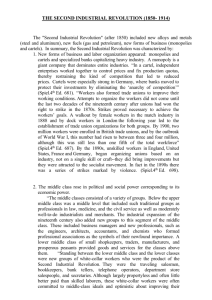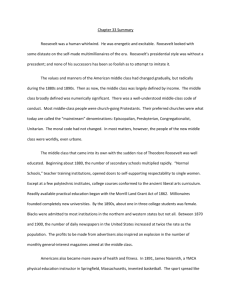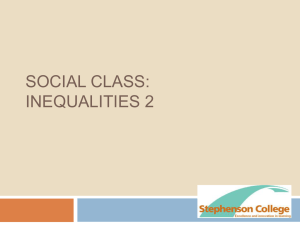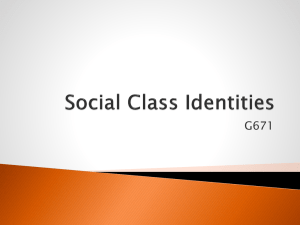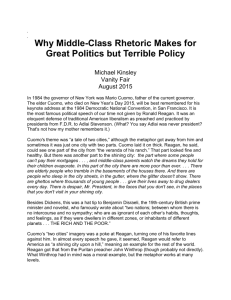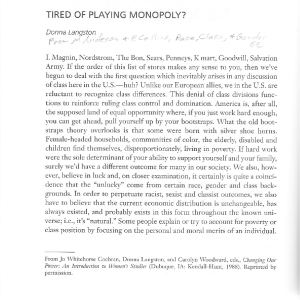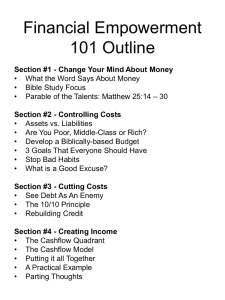File - Ms. Gurr`s Class
advertisement
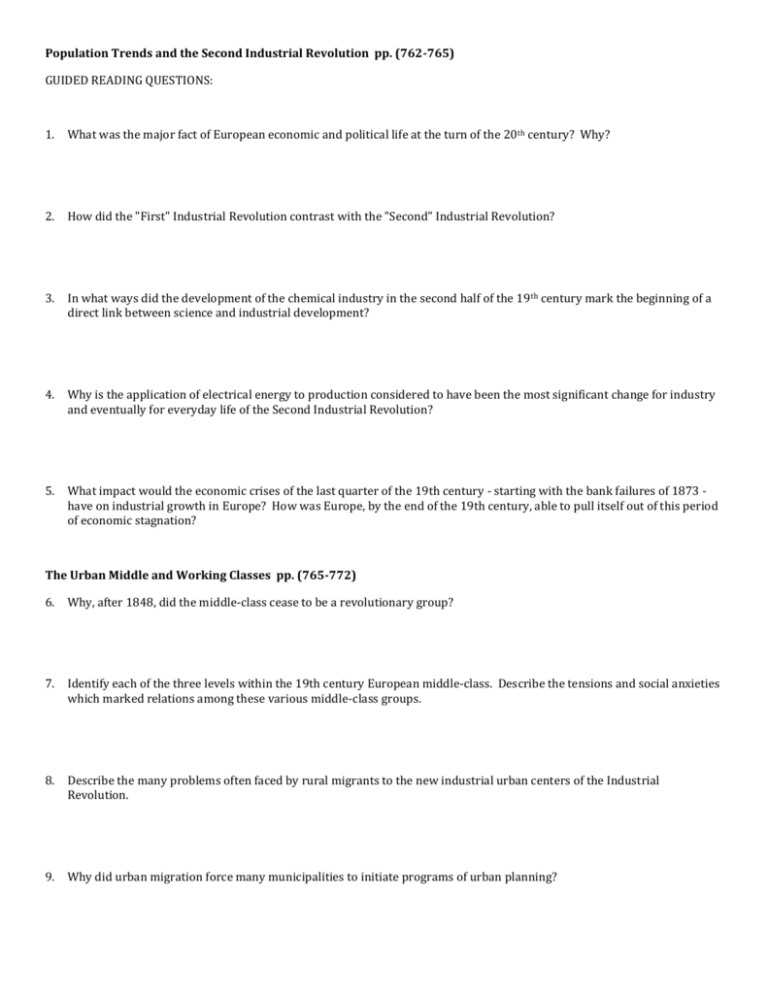
Population Trends and the Second Industrial Revolution pp. (762-765) GUIDED READING QUESTIONS: 1. What was the major fact of European economic and political life at the turn of the 20 th century? Why? 2. How did the "First" Industrial Revolution contrast with the "Second" Industrial Revolution? 3. In what ways did the development of the chemical industry in the second half of the 19 th century mark the beginning of a direct link between science and industrial development? 4. Why is the application of electrical energy to production considered to have been the most significant change for industry and eventually for everyday life of the Second Industrial Revolution? 5. What impact would the economic crises of the last quarter of the 19th century - starting with the bank failures of 1873 have on industrial growth in Europe? How was Europe, by the end of the 19th century, able to pull itself out of this period of economic stagnation? The Urban Middle and Working Classes pp. (765-772) 6. Why, after 1848, did the middle-class cease to be a revolutionary group? 7. Identify each of the three levels within the 19th century European middle-class. Describe the tensions and social anxieties which marked relations among these various middle-class groups. 8. Describe the many problems often faced by rural migrants to the new industrial urban centers of the Industrial Revolution. 9. Why did urban migration force many municipalities to initiate programs of urban planning? 10. Why did the government of Napoleon III initiate a program to redesign the city of Paris? In what ways was the redesign of Paris motivated by the political concerns of the French government? 11. Which two structures in Paris came to symbolize the social and political divisions between liberals and conservatives in the government of France's Third Republic? Why was each of these two structures built? 12. What factors led to the migration of the urban middle and working classes from the city centers to the newly developing suburbs surrounding the city proper? 13. What factors led the mid-19th century drive to publicize the dangers posed by the unsanitary conditions associated with overcrowding - dangers such as cholera? What was done to address 9. 9. In what ways did Britain's Public Health Act of 1848, and France's Melun Act of 1851, allow these two governments to expand their powers in an effort to address public health concerns? 14. How did the revolutions of 1848 encourage middle-class reformers to seek housing reform to solve the medical, moral, and political dangers posed by urban slums? 15. What are "middle-class values"? Which "middle-class values" did advocates of housing reform hope would be imparted on the working-class? What was the primary goal of housing reform? Late-Nineteenth-Century Women’s Experiences pp. (765-772) GUIDED READING QUESTIONS: 1. Create a T-diagram. On the left, list the various ways by which women in the mid-nineteenth century faced social and legal disabilities in regards to property rights. On the right, list the reforms that were carried out to improve women’s property rights. 2. List the various ways by which women in the mid-nineteenth century faced social and legal disabilities in regards to family law. 3. List the many barriers faced by mid-nineteenth century women which limited their access to education. 4. List the many ways women benefited from the large-scale expansion in the variety of jobs available to them during the time period of the Second Industrial Revolution. 5. List the reasons why many women withdrew from the labor force during the period of the Second Industrial Revolution. 6. Why were working-class European women of the nineteenth-century particularly vulnerable to being exploited when working outside the home? 7. What were the chief reasons why every major late-nineteenth century European city had thousands of prostitutes? 8. In what ways did the typical European middle-class woman of the nineteenth-century differ from the typical working-class woman of the same period? 9. What was meant by the expression, “the cult of domesticity?” In what ways does it describe the typical experience of middle-class European women of the nineteenth-century? 10. Describe the religious and charitable duties of nineteenth-century middle-class European women. 11. For what reasons did many European middle-class couples consciously decide to limit their family size during the nineteenth-century?
